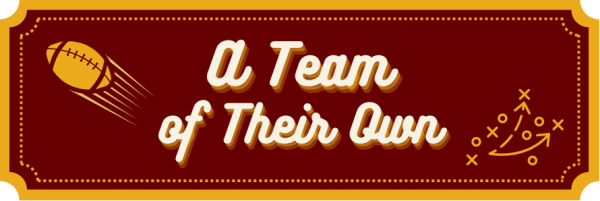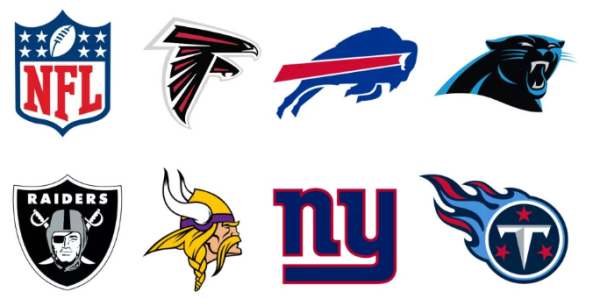Dashing Into Track Season
What to Expect Running Track For Oakton
Track and field is one of the oldest sports well-known involving sprinting, long-distance running, jumping, and even throwing. The ancient Olympic Games began in the 776 BC, when Koroibos, a cook from the nearby city of Elis, won the stadium race, a foot race 600 feet long. Not until the 1860s, however, did the sport flourish. In 1866, the first English championships were held by the newly formed Amateur Athletic Club, which opened the competition to all “gentlemen amateurs.” Especially athletes who received no financial compensation for their efforts. In 1896, the first modern Olympic Games were staged. Watching track and field during the summer Olympics is an exhilarating experience, but have you ever imagined yourself on the track, winning gold for your country? Even though running professionally isn’t everyone’s cup of tea, it would be an honor to be out on the track representing your country. The big question is, how do you get to that point? Well the answer would be starting early. Mostly all Olympians started running track in high school. Take the fastest man alive at the moment: Usain Bolt started competing at the age of 16 and look where he is now! With proper training and determination, running track in high school can open doors to new opportunities like athletic scholarships. High schoolers are getting even more fierce on the track in Virginia, and FCPS high school coaches are producing future Olympians and world-class runners.
If you’re thinking of running track in the future at Oakton, here are some helpful tips and what to expect from what I’ve learned from my experience in running indoor track for Oakton.
- Tryouts: Trying out for track is different at most schools, but Oakton’s tryouts last a week. Each day, students trying out stretch and warm up together, then you’re off to try out for the event of your choice. If you know you’re a sprinter with little endurance, I would recommend the 100, 200, and 400 meter dashes. These are quick and intense. If you have experience running long distances or simply have better endurance, the 800, 1600, and 3200 meter runs are encouraged. There are also relays in these events which are really fun.
- The coaches are going to be looking for determination, maturity, and effort. It’s not good to play around with your friends, as the coaches will think you’re just there to “be there.”
- Proper attire is a big thing too, since we’re going to be outside in decent weather, make sure to have shorts or leggings, shoes with support, and a windbreaker or light jacket.
- Staying hydrated and loose is key for good performance.Occasionally water breaks will be taken.
- Overall, before tryouts you want to have a balanced meal, good sleep, and a positive attitude to attack the track. Also, be aware of the qualifications and what running and field events you’re interested in.
- Practice: Track practices can be enjoyable if you’re serious about running and you actually want to be there. Keep in mind practicing is pretty tiring if you’re a sprinter.
- We do lots of workouts like abs, weight room, and multiple repeats of different distances.
- Since practice starts around 3:30, you have to change and head out to the track where we do a two-lap warmup.
- After that we stretch and do drills consisting of high knees, lunges, clappers, a, b,and c skips, butt kicks etc. Once you’ve completed drills, you go off to practice your events.
- Competition: Competition day can vary based on if you’re Junior Varsity or Varsity.
- For JV, you will be attending league meets where you go against schools usually near Oakton, but as for Invitationals, those can be in a whole other state!
- One of the best parts about running track is attending big track meets such as districts and regionals. You even get to leave school early since the meets will usually be far from Oakton. Just hearing your name get called for going to finals makes you fall in love with the sport even more.
- Competition can get fierce, especially in sprints like the 100 and 200 meter dashes. Since the races are so quick, the crowd is super lively.
- Winning isn’t everything. When you lose, you can unders what you did, learn from the experience, move on, and get better. Being upset about losing just lets your opponents know that you’re as strong as they are and they feel a sense of advantage. On the other hand, your coach will be aware of how determined you were about the race and seeing that let’s the coach know you care about your performance.
Overall, running track has its cons, such as getting injured right before an important meet, or getting injured period. Pros can range from winning a medal to setting a personal record. Track is full of learning experiences and it’s a great environment to make friends. I personally have become less shy just being on the track team, and being the only freshman on the Varsity team, I’ve become mature for the better. If you really want to succeed in track and field, my advice would be to be confident and stay positive no matter what. From experience I can say that it really comes in handy when you’re at the blocks and the stadium is quiet then you hear the word “set” followed by the sound of the gun telling you to go, you block out all the negativity and you see you’ve won. Accomplishing such a difficult task, leaves you thinking about all the long, hard, and tiring practices really paying off!





